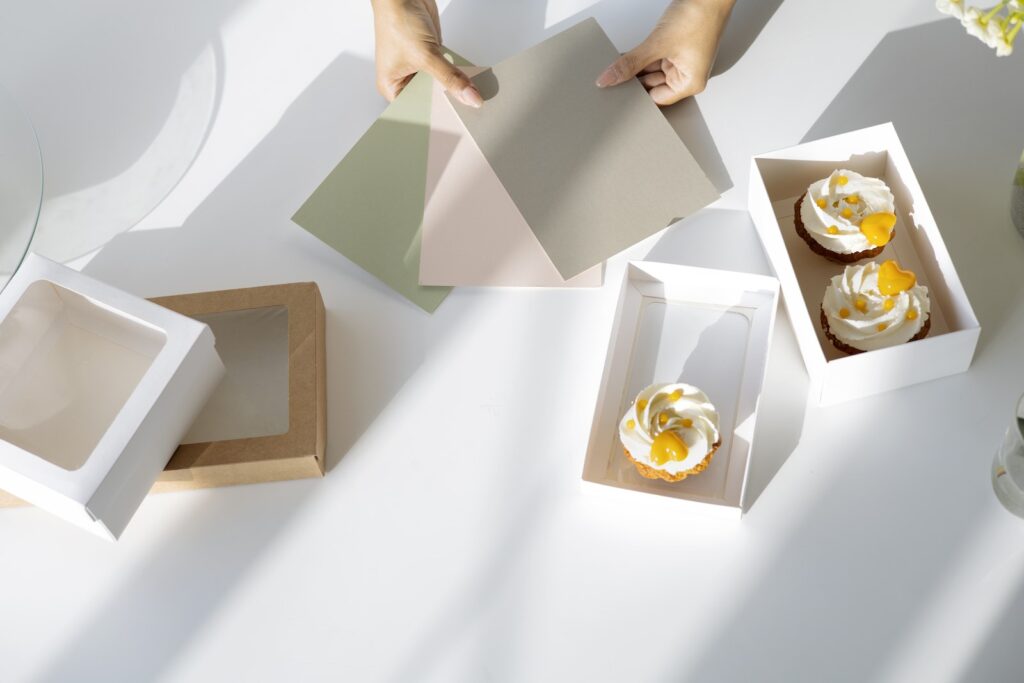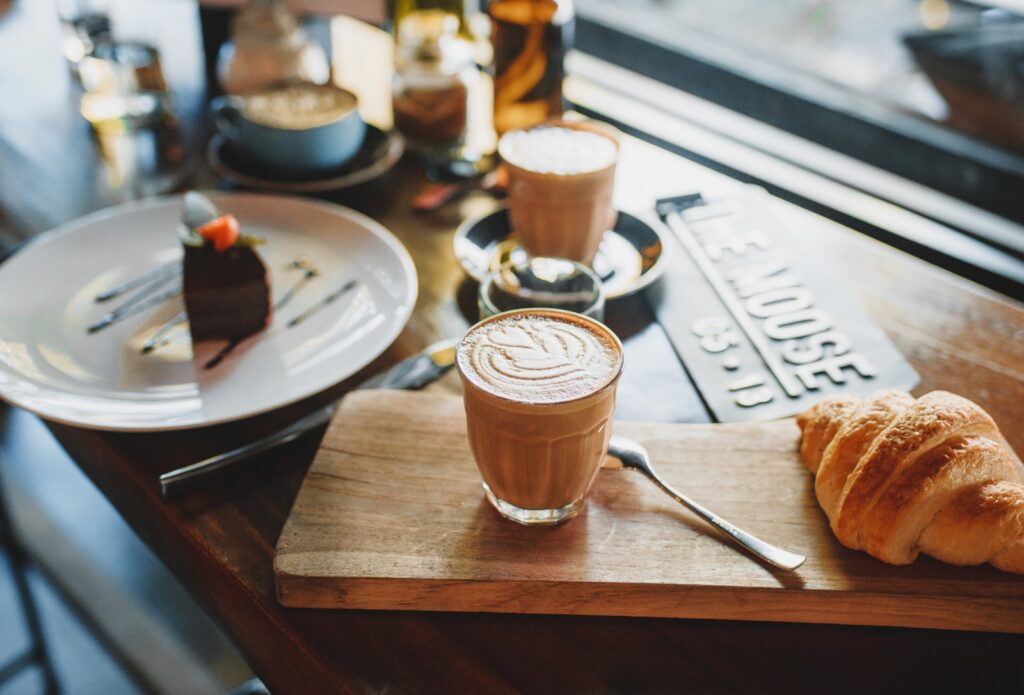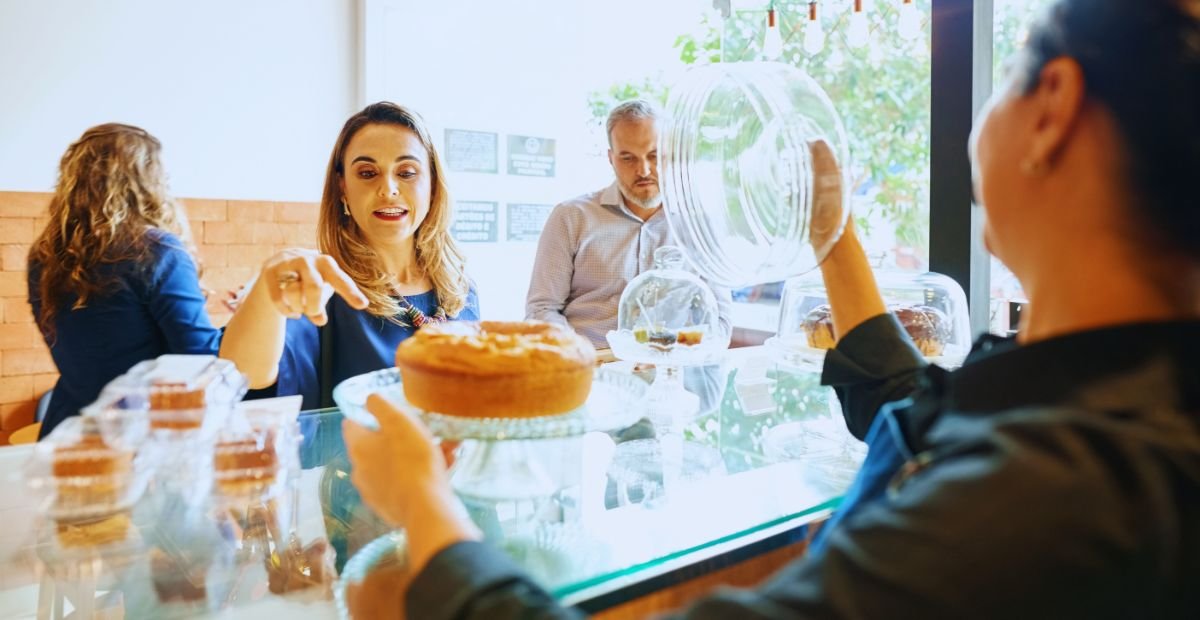12 Tips on How to Store Coffee Cake Like a Pro?
Coffee cake is a delicious treat that can be enjoyed any time of the day. Whether you have made it at home or bought it from a bakery, it is important to store it properly to maintain its freshness and taste.
In this article, we will discuss how to store coffee cake and keep it moist and delicious for as long as possible. Moreover, we will explore the factors to consider when choosing the right storage container for your needs.
Understanding the Shelf Life of Coffee Cake
The coffee cake, a delightful combination of moist cake and a sweet and crunchy topping, is a favorite treat that often finds its way onto the breakfast table, brunch gatherings, or as a comforting bite about a cup of coffee although there is no denying that coffee cake tastes good for as long as it keeps it while retaining its texture and flavor, and it is important to know that it can be enjoyed. Let’s delve into the factors that affect coffee cake storage and how to make sure every bite tastes great.

1. Ingredients Matter:
The shelf life of a coffee cake depends heavily on ingredients such as milk, eggs, and nuts. For example, a coffee cake with perishable ingredients like cream cheese, custard, and fresh fruit will have a shorter shelf life than one with non-perishable ingredients
2. Moisture Content:
The moisture content of coffee cake is a crucial factor. Coffee cakes with high moisture content, such as those with fruit fillings or cream cheese swirls, tend to have a shorter shelf life as they are prone to mold and spoilage.
3. Storage Conditions:
Proper storage conditions play a significant role in extending the shelf life of coffee cake. Storing it in an airtight container or wrapping it tightly in plastic wrap or aluminum foil can help prevent moisture loss and exposure to air, which can lead to staleness.
4. Room Temperature vs. Refrigeration:
Coffee cake is generally best stored at room temperature for short-term consumption, usually up to 2-3 days. When stored properly in a cool, dry place, away from direct sunlight and heat sources, it retains its moisture and flavor.
Refrigeration is not recommended for most coffee cakes, especially if they don’t contain perishable fillings. The cold temperatures of a refrigerator can dry out the cake and alter its texture.
5. Freezing for Long-Term Storage:
For extended storage, freezing is the best option. Wrap the coffee cake tightly in plastic wrap and place it in an airtight freezer-safe container or a heavy-duty freezer bag. Properly frozen coffee cake can maintain its quality for up to 2-3 months.
6. Visual and Sensory Inspection:
Before consuming coffee cake, always perform a visual and sensory inspection. Look for signs of mold, unusual odors, or a significant change in texture. If any of these issues are present, it’s best to discard the cake.
7. Reheating:
To enjoy a coffee cake that has been stored, consider reheating it slightly. You can warm individual slices in the microwave for a few seconds or place the entire cake in a preheated oven at a low temperature (around 300°F or 150°C) for 10-15 minutes to restore its warmth and freshness.
In summary, the shelf life of coffee cake varies based on its ingredients, moisture content, and storage conditions. Properly stored at room temperature or frozen for extended storage, coffee cake can continue to delight your taste buds while preserving its quality.
By understanding these factors, you can ensure that your coffee cake remains a delectable treat for as long as possible.
Choosing the Right Storage Container
Proper food storage is essential for preserving freshness, preventing waste, and ensuring the safety of your meals. Selecting the right storage container is a critical aspect of this process.
With a myriad of options available, it’s important to understand which containers are best suited for different types of foods and how to make the most of your storage choices.
1. Material Matters:
Storage containers come in various materials, each with its own set of advantages and considerations:
- Plastic Containers: These are lightweight, durable, and often come in various shapes and sizes. Opt for food-grade plastic containers free of harmful chemicals like BPA. Look for containers labeled as microwave-safe and dishwasher-safe for added convenience.
- Glass Containers: Glass containers are non-porous and don’t absorb odors or stains. They are an excellent choice for reheating food in the microwave or oven. However, they can be heavier and more fragile than plastic.
- Stainless Steel Containers: Stainless steel containers are known for their durability, resistance to stains and odors, and the ability to keep food hot or cold for extended periods. They are an excellent choice for transporting meals.
2. Airtight Sealing:
Effective food storage containers should have airtight seals to prevent air and moisture from entering. Look for containers with secure, leak-resistant lids that create a tight seal when closed. This helps keep your food fresher for longer and prevents spills during transportation.
3. Size and Shape:
Consider the size and shape of the container in relation to your storage needs. Choose containers that can accommodate the quantity of food you typically store. Rectangular or square containers often maximize space utilization and fit well in most refrigerators and freezers.
4. Transparency:
Opt for containers with transparent sides or lids. This allows you to easily identify the contents without opening the container, reducing the risk of food spoilage due to unnecessary exposure to air and light.
5. Stackability:
Containers that stack neatly are space-efficient, allowing you to make the most of your storage space. Look for containers with uniform lid sizes for ease of stacking.
6. Microwave and Freezer Compatibility:
If you plan to reheat or freeze food in the storage container, ensure that it is labeled as microwave-safe and freezer-safe. This prevents the risk of the container warping or cracking when exposed to extreme temperatures.
7. Easy to Clean:
Choose containers that are easy to clean, either by hand or in the dishwasher. Containers with smooth, rounded interiors are often simpler to clean than those with intricate corners and crevices.
8. Environmentally Friendly:
Consider eco-friendly options like reusable silicone food storage bags or glass containers with BPA-free plastic lids. These choices minimize single-use plastic waste and promote sustainability.
9. Durability:
Invest in containers that are built to last. Quality containers may cost more initially but can save you money in the long run by eliminating the need for frequent replacements.
By taking these factors into account when choosing your storage containers, you can ensure that your food remains fresh, safe to eat, and easy to manage. Whether you’re storing leftovers, meal prepping, or packing lunches, the right containers can make a significant difference in your kitchen organization and food preservation efforts.

Determining the Best Storage Location
Choosing the right storage location for your food and other items can significantly impact their freshness, safety, and ease of access. Whether you’re organizing your pantry, refrigerator, freezer, or household items, understanding the best storage locations is crucial.
In this guide, we’ll explore how to determine the optimal storage location for various items to ensure they stay in excellent condition and are readily accessible when needed.
1. Pantry Storage:
Pantry storage is ideal for non-perishable items and some kitchen staples. Here’s how to make the most of your pantry space:
- Shelf Organization: Store items like canned goods, pasta, rice, and dry cereals on shelves. Group similar items together for easy access.
- Use Clear Containers: Transfer items like flour, sugar, and grains into clear, airtight containers to keep them fresh and easily visible.
- Spices and Herbs: Store spices and dried herbs in a cool, dark area away from heat sources to maintain flavor.
2. Refrigerator Storage:
The refrigerator is crucial for keeping perishable foods fresh. Follow these guidelines:
- Proper Zones: Understand the refrigerator’s temperature zones. Keep perishables like dairy, meats, and leftovers in the coldest sections, usually the back and bottom shelves.
- Fruit and Vegetable Drawers: Store fruits and vegetables separately in designated drawers to prevent cross-contamination.
- Door Storage: Reserve door storage for condiments, sauces, and beverages. It’s the warmest part of the refrigerator.
3. Freezer Storage:
Freezers are excellent for extending the shelf life of foods. Use these tips:
- Label and Date: Label and date items to easily identify them and keep track of their freshness.
- Proper Packaging: Use airtight containers or freezer bags to prevent freezer burn and maintain flavor.
- Organize by Use: Keep frequently used items in the top drawers or shelves for easy access, while long-term storage items can go toward the back.
4. Household Items:
When storing non-food items in your home, consider the following:
- Accessibility: Store frequently used items in easily accessible locations. For example, keep cleaning supplies in a convenient area for quick access.
- Safety: Store potentially hazardous items like cleaning chemicals or sharp objects out of reach of children and pets.
- Organization: Use storage containers, shelves, and labels to keep items organized, making it easier to find what you need.
5. Consider Temperature and Humidity:
Understand the temperature and humidity requirements of items you’re storing:
- Dry Goods: Keep pantry items in a cool, dry place to prevent spoilage and maintain quality.
- Perishables: Maintain the refrigerator and freezer at appropriate temperatures to ensure food safety.
- Temperature-Sensitive Items: Store items like wine, chocolate, and candles in temperature-stable locations to prevent melting or spoiling.
6. Rotate Stock:
Practice the “first in, first out” (FIFO) method to ensure that older items are used before newer ones. This reduces food waste and helps you maintain freshness.
7. Regularly Check Expiration Dates:
Regularly inspect the items in your storage locations to check for expiration dates and signs of spoilage. Discard any expired or spoiled items promptly.
By understanding the best storage locations for different items and following these guidelines, you can maximize freshness, reduce waste, and maintain an organized and efficient home.
Guidelines for Freezing Coffee Cake
Freezing coffee cake can be a convenient way to extend its shelf life and enjoy it at a later time. Whether you have leftover coffee cake or want to prepare it in advance for future enjoyment, here are some guidelines to ensure that it freezes well and maintains its quality:
1. Cool Completely: Allow the coffee cake to cool completely at room temperature before attempting to freeze it. If you freeze it while it’s still warm, condensation can form, leading to a soggy texture when it’s thawed.
2. Portioning: Consider portioning the coffee cake before freezing it. This makes it easier to thaw and enjoy individual servings without having to defrost the entire cake.
3. Wrap Properly:
- Use Plastic Wrap: Wrap the coffee cake tightly in plastic wrap to prevent air from reaching it. Ensure that all parts are covered securely.
- Double Layer: Consider adding a second layer of protection by wrapping the plastic-wrapped coffee cake in aluminum foil. This helps to prevent freezer burn and maintains freshness.
4. Airtight Container: If you prefer using containers over wrapping, place the coffee cake in an airtight, freezer-safe container. Ensure that the container is sealed tightly to prevent air from entering.
5. Label and Date: Always label the container or wrapped coffee cake with the date of freezing. This helps you keep track of its freshness and ensures that you use it within a reasonable timeframe.
6. Freeze Quickly: Place the coffee cake in the freezer as soon as it’s properly wrapped or in a container. The faster it freezes, the better it will retain its texture and flavor.
7. Temperature Setting: Set your freezer to the coldest temperature to ensure that the coffee cake freezes quickly and maintains its quality.
8. Use within 2-3 Months: Coffee cake can be stored in the freezer for up to 2-3 months without significant loss of quality. After this period, it may start to develop freezer burn or lose its original taste.
9. Thawing: When you’re ready to enjoy the coffee cake, remove it from the freezer and let it thaw in the refrigerator. This gradual thawing process helps preserve the texture and prevents moisture loss.
10. Reheating (Optional): To revive the coffee cake’s freshness and warmth, you can reheat it in the oven at a low temperature (around 300°F or 150°C) for 10-15 minutes. This step is optional but can enhance the eating experience.
11. Check for Freshness: After thawing, check the coffee cake for any signs of freezer burn or spoilage, such as unusual odors or off-putting textures. If it doesn’t appear to be in good condition, it’s best to discard it.
Freezing coffee cake can be an effective way to preserve its deliciousness for future enjoyment. By following these guidelines, you can ensure that your frozen coffee cake maintains its quality and is a tasty treat when you’re ready to enjoy it.
Properly Thawing Frozen Coffee Cake
Properly thawing frozen coffee cake is essential to ensure that it retains its texture, flavor, and overall quality. Here are the steps to thaw frozen coffee cake safely and effectively:
1. Plan Ahead:
Thawing frozen coffee cake requires some advance planning. Consider the following guidelines:
- Refrigeration Time: Thaw coffee cake in the refrigerator for the best results. This method is slow but ensures even thawing and minimal texture changes.
- Time Estimate: Depending on the size and thickness of the coffee cake, it can take anywhere from several hours to overnight to thaw completely in the refrigerator.
2. Retrieve from the Freezer:
Remove the frozen coffee cake from the freezer. Keep it in its airtight container, wrapping, or freezer bag while thawing to prevent exposure to air and moisture.
3. Place in the Refrigerator:
Place the frozen coffee cake in the refrigerator on a plate or tray to catch any condensation that may form during thawing. Ensure that the coffee cake remains in its original wrapping or container to maintain freshness.
4. Allow Ample Time:
Give the coffee cake enough time to thaw slowly in the refrigerator. The time required will vary based on the size and thickness of the cake:
- Small slices or individual portions may take a few hours.
- Larger cakes may need overnight thawing.
5. Check for Thawing:
After a few hours or overnight, check the coffee cake to see if it has thawed completely. It should feel soft to the touch, and you should be able to press a finger gently into the cake without resistance.
6. Optional Reheating (If Desired):
If you prefer to serve the coffee cake warm, you can reheat it in the oven or microwave after it has thawed. Here’s how:
- Oven Method: Preheat your oven to a low temperature (around 300°F or 150°C). Place the thawed coffee cake on a baking sheet and heat it for 10-15 minutes, or until warmed through. This method helps restore the coffee cake’s freshness and flavor.
- Microwave Method: For individual portions, you can use the microwave. Heat each slice for 15-30 seconds, checking to ensure it doesn’t become too hot.
7. Serve and Enjoy:
Once the coffee cake has thawed and, if desired, been reheated, it’s ready to serve and enjoy. It should taste nearly as delicious as when it was first baked.
8. Store Leftovers:
If you have leftovers after thawing, store them in an airtight container in the refrigerator to maintain their freshness. Consume the leftovers within a few days for the best taste and texture.
9. Discard If Spoiled:
If the coffee cake shows any signs of spoilage, such as unusual odors, off-putting textures, or mold, discard it immediately.
By following these steps, you can safely and effectively thaw frozen coffee cake, ensuring that it’s as enjoyable as when it was first made. Proper thawing methods help preserve the cake’s quality and flavor, allowing you to savor every delicious bite.

Tips for Maintaining Freshness
Maintaining freshness is crucial for preserving the quality and safety of food and other perishable items. Whether you’re dealing with groceries, leftovers, or other perishables, here are some essential tips for ensuring that items stay fresh for as long as possible:
1. Proper Refrigeration:
- Keep Perishables Cold: Refrigerate perishable items promptly after purchase or use to prevent spoilage. Maintain a refrigerator temperature of 40°F (4°C) or lower.
- Check Temperatures: Use a refrigerator thermometer to monitor and ensure that your fridge is at the correct temperature.
- Organize the Fridge: Store perishables in the appropriate areas of the refrigerator, with raw meats on the bottom shelf to prevent cross-contamination.
- Use the Crisper Drawers: Utilize crisper drawers to maintain the freshness of fruits and vegetables. Adjust humidity settings as needed.
- Cover or Seal Foods: Store leftovers and open containers of food in airtight containers or with plastic wrap to prevent odors from spreading and to maintain moisture.
2. Freezing:
- Use Freezer Bags: When freezing items, use freezer-safe bags or containers to prevent freezer burn and maintain quality.
- Label and Date: Label frozen items with their contents and date of freezing to keep track of freshness.
- Optimal Freezer Temperature: Set your freezer to 0°F (-18°C) or lower for the best preservation of frozen foods.
3. Store Food Properly:
- Fruits and Vegetables: Store fruits and vegetables in separate crisper drawers, and avoid storing them together as some fruits emit ethylene gas, which can cause others to ripen or spoil faster.
- Dry Goods: Keep pantry staples like flour, rice, and pasta in airtight containers to prevent pests and maintain freshness.
- Coffee and Spices: Store coffee beans and ground coffee in an airtight container away from light and moisture. Similarly, store spices in airtight containers away from heat and humidity.
- Nuts and Seeds: Keep nuts and seeds in the refrigerator or freezer to prevent them from going rancid due to their natural oils.
4. Properly Wrap and Seal:
- Wrap Meats: When storing meat in the refrigerator or freezer, wrap it tightly in plastic wrap or aluminum foil to prevent air exposure and freezer burn.
- Use Vacuum Sealers: Consider using vacuum-sealing machines to remove air from bags and extend the shelf life of items.
5. FIFO Method (First In, First Out):
- Practice the FIFO method to ensure that older items are used or consumed before newer ones, reducing waste and maintaining freshness.
6. Regularly Check Expiry Dates:
- Check the expiry dates on perishable items and discard anything that is past its prime or shows signs of spoilage.
7. Maintain Cleanliness:
- Keep your refrigerator and storage areas clean to prevent mold, odors, and contamination.
8. Rotate Items:
- Periodically rotate items in your pantry, fridge, and freezer to ensure that older items are used first.
9. Store Items Separately:
- Store items with strong odors separately to prevent flavor transfer. For example, keep strong-smelling cheeses in an airtight container.
10. Be Mindful of Ethylene Gas:
- Be aware of ethylene-producing and ethylene-sensitive fruits and vegetables to prevent premature ripening or spoilage.
11. Use Freshness Tools:
- Utilize freshness tools like produce storage bags or containers designed to extend the life of specific items.
12. Regularly Inspect:
- Regularly inspect your pantry, fridge, and freezer for expired or spoiled items and discard them promptly.
By following these tips and best practices, you can significantly extend the freshness and shelf life of your food and other perishable items, reducing waste and ensuring that your items are safe and enjoyable to use or consume.
Frequently Asked Questions How To Store Coffee Cake
Can a coffee cake be left out overnight?
Coffee cake can be left out at room temperature for a short period, such as overnight, as long as it is properly covered or wrapped to prevent it from drying out or becoming stale. However, for longer storage, it is recommended to refrigerate or freeze it to maintain its freshness.
Is coffee cake better warm or cold?
Whether coffee cake is better warm or cold is a matter of personal preference. Some people enjoy it warm, as it brings out the flavors and can enhance the aroma. Others prefer it at room temperature or even chilled. The choice is yours, and you can enjoy coffee cake according to your taste.
Is coffee cake good the next day?
Coffee cake can still be quite good the next day if it is stored properly. When wrapped or stored in an airtight container, coffee cake can retain its moisture and flavor, making it enjoyable for a day or two after it’s made.
Does coffee cake with fruit need refrigerated?
Coffee cake with fruit fillings, such as apple or berry, should generally be stored in the refrigerator. The fruit’s moisture content can make the cake more prone to spoilage if left at room temperature. Refrigeration helps extend its shelf life and maintains freshness.
What is the shelf life of coffee cake?
The shelf life of coffee cake depends on various factors, including its ingredients, moisture content, and how it’s stored. Typically, when stored at room temperature, coffee cake can stay fresh for 2-3 days. If refrigerated, it can last up to a week. When frozen, coffee cake can maintain its quality for 2-3 months.
How long will homemade coffee cake stay fresh?
Homemade coffee cake will stay fresh for a similar duration as store-bought coffee cake, depending on how it’s stored. When kept at room temperature, it’s best consumed within 2-3 days. Refrigeration can extend its freshness for up to a week, and freezing allows you to enjoy it for 2-3 months if properly wrapped and sealed.
Conclusion
In conclusion, knowing how to store coffee cake properly is essential to ensure that this delectable treat maintains its freshness and flavor. By following the guidelines outlined in this guide, you can maximize the shelf life of your coffee cake and savor its deliciousness over an extended period.
Whether you’re dealing with homemade coffee cake or a store-bought delight, the key takeaways include cooling it down before storage, wrapping it carefully to prevent moisture loss, choosing the right storage container, and considering freezing for long-term preservation.
